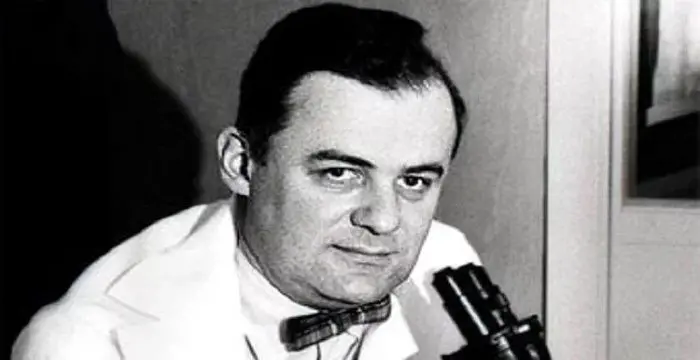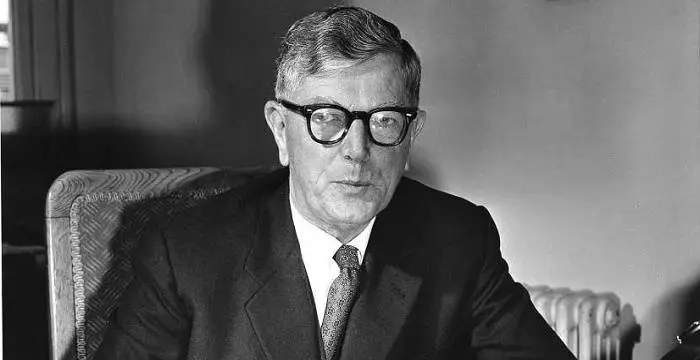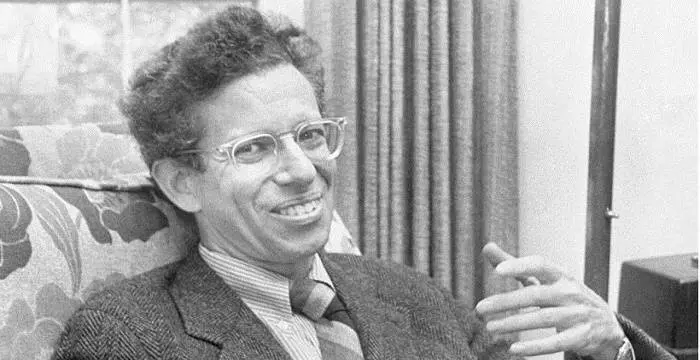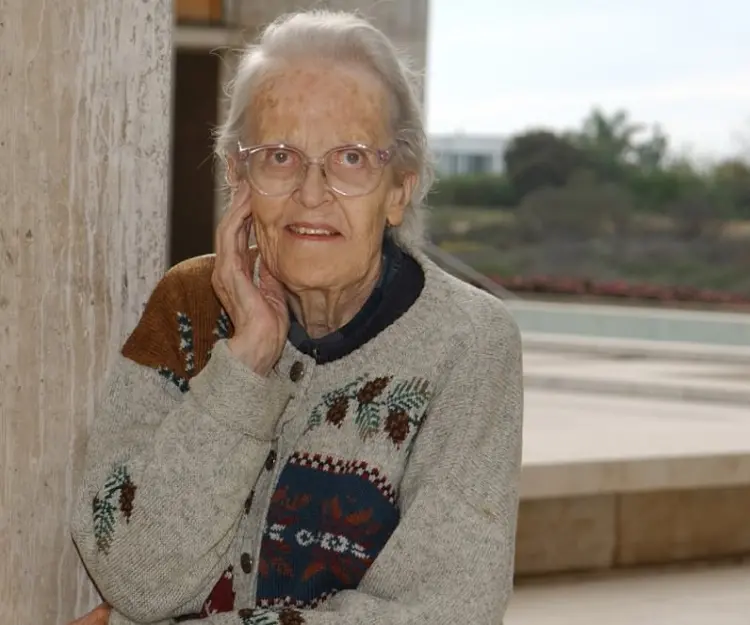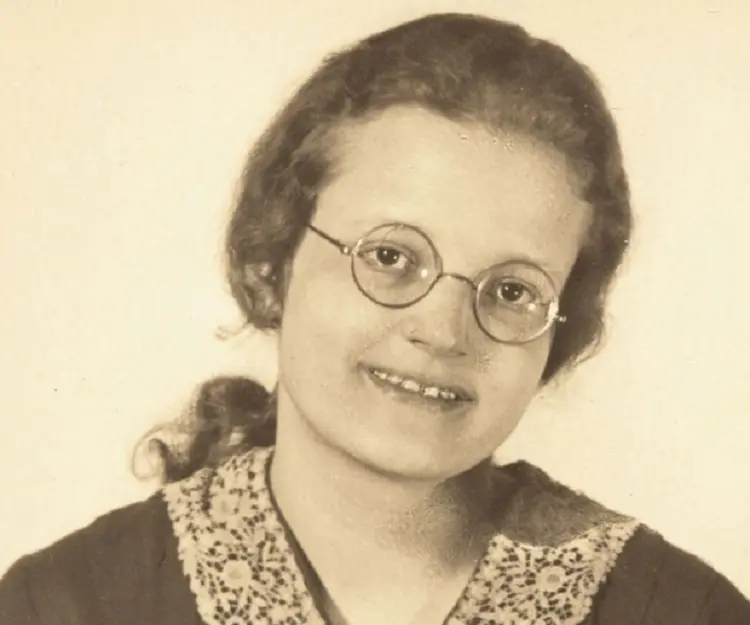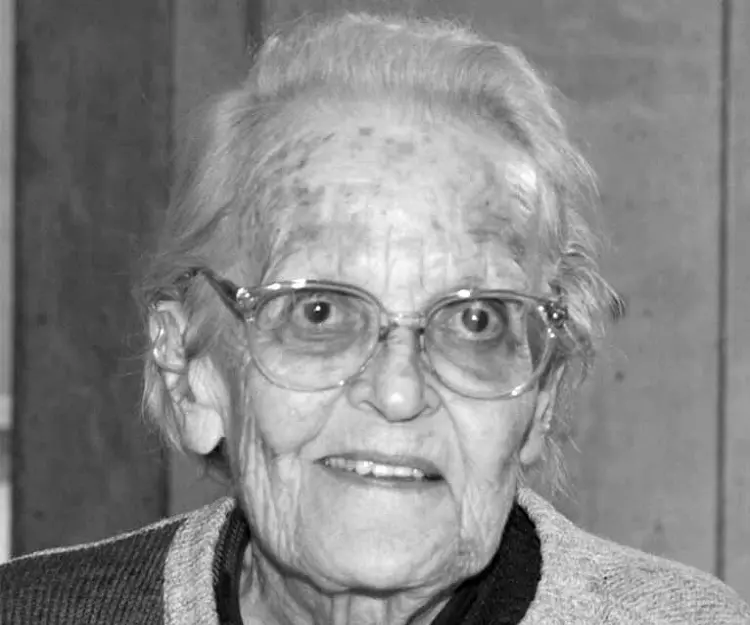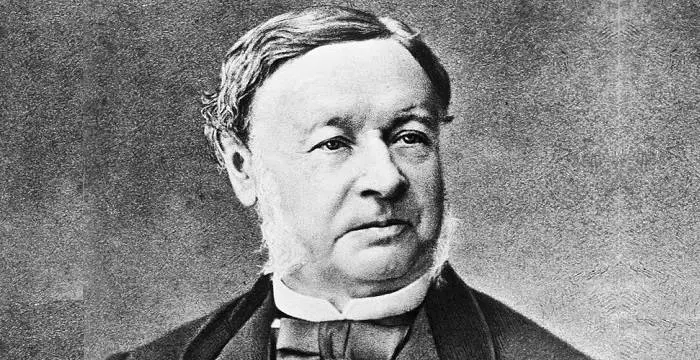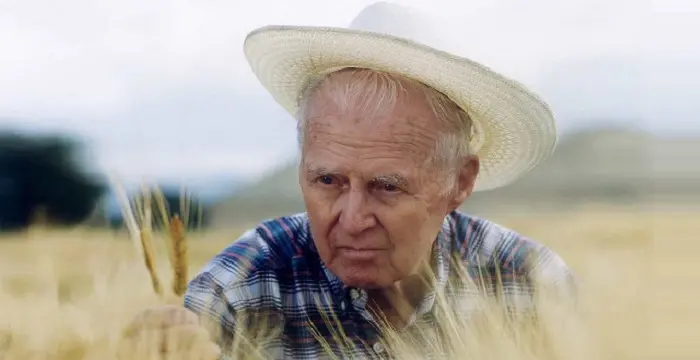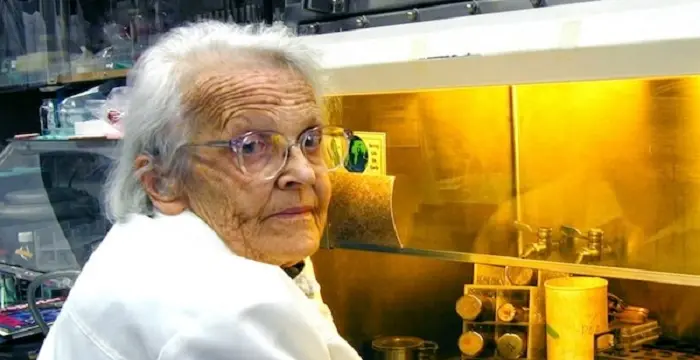
Marguerite Vogt - Virologists, Timeline and Childhood
Marguerite Vogt's Personal Details
Marguerite Vogt was a German-born American cancer biologist and virologist best known for her research on polio and cancer.
| Information | Detail |
|---|---|
| Birthday | February 13, 1913 |
| Died on | July 6, 2007 |
| Nationality | American |
| Famous | Scientists, Biologists, Virologists |
| Birth Place | Berlin |
| Born Country | Germany |
| Gender | Female |
| Father | Oskar Vogt |
| Mother | Cécile Vogt-Mugnier |
| Sun Sign | Aquarius |
| Born in | Berlin |
| Famous as | Biologist & Virologist |
| Died at Age | 94 |
// Famous Virologists
Frederick Chapman Robbins
Frederick Chapman Robbins was an American paediatrician and virologist who was one of the joint winners of the 1954 Nobel Prize in Physiology 1954. Check out this biography to know about his childhood, life, achievements, works & timeline.
Frank Macfarlane Burnet
Sir Frank Macfarlane Burnet was an Australian virologist and immunologist, known for his contributions in human biology. This biography profiles childhood, life, career, achievements and timeline of this Nobel Laureate.
Howard Martin Temin
Howard Martin Temin was an American geneticist and virologist who won a share of the 1975 Nobel Prize in Physiology or Medicine.
Marguerite Vogt's photo
Who is Marguerite Vogt?
Marguerite Vogt was a German-born American cancer biologist and virologist best known for her research on polio and cancer at the ‘Salk Institute for Biological Studies’. She collaborated with Nobel Prize-winning scientist Renato Dulbecco to analyse the way polio virus develops plagues in cell cultures, a discovery that eventually aided in the development of a polio vaccine. The duo examined how some viruses take control of the cells infected by them. They displayed that polyomavirus, the small DNA viruses that are characteristically extensive, tucks in their own DNA into that of the host cell. These analyses of the duo changed the descriptive form of virology to a more determinable one. Vogt and Dulbecco also showed the way a virus can change a cell to a cancerous one. Their investigations on cancer led to some of the first inklings of the genetic characteristic of the disease. She began her research on polio virus at the ‘California Institute of Technology’ (Caltech). Thereafter she joined the ‘Salk Institute for Biological Studies’ where she worked for decades and remained the oldest working scientist of the institute who had spent more years at a Salk bench than any other scientist. Over a career span of almost an incredible eight decades, Vogt, a dedicated scientist who worked for around ten hours a day for generally six days a week, trained and aided legion of scientists, graduate pupils and postdoctoral fellows of whom four researchers went on to win the ‘Nobel Prize’. However she remained one of the most unsung female scientists who won no professional award or distinction for her scientific contributions.
// Famous Scientists
Juliane Koepcke
Juliane Koepcke is a German-Peruvian biologist, who was the lone survivor among the 92 passengers and crew of the ill-fated LANSA Flight 508 that crashed in the Peruvian rainforest on 24 December 1971. Know more about her life in this biography.
Henry Cavendish
Henry Cavendish was a theoretical chemist and physicist, renowned for discovery of hydrogen and calculation of the mass of earth. To know more about his childhood, profile, timeline and career read on
Konstantin Tsiolkovsky
Konstantin Tsiolkovsky was a Russian rocket scientist and a pioneer of astronautics. This biography provides detailed information about his childhood, family, personal life, career, achievements, etc.
Childhood & Early Life
She was born on February 13, 1913, in Germany to Oskar Vogt and Cécile Vogt-Mugnier as their youngest daughter among two children.
Both her parents were notable neuroscientists, who were best known for their intensive cytoarchetectonic research on the brain, served at the Kaiser Wilhelm/Max Planck Institute for Brain Research in Berlin. In 1925 her father was summoned to Moscow among other neurologists to study the brain of Lenin.
She was raised in an intensified and stimulating scientific environment. Her own allegiance towards science developed when she was fourteen years of age when she began to study fruit flies. At fourteen she penned down her first paper on Drosophila, a fruit fly.
In 1937 she earned an M.D. degree from the ‘University of Berlin’.
Her father remained a director of the Kaiser Wilhelm/Max Planck Institute till the time her parents were dismissed from the institute by the Nazis in 1937 due to political issues following which the family left Berlin.
Her parents established a research centre of their own in the mountainous region of Black Forest in southwest Germany with the aid of the wealthy industrialist family of the Krupps and lived there till the end of the ‘Second World War’. There she carried forward her research on Drosophila development. She studied two primary problems in its development – the early homeotic mutants like the proboscopedia, which completely change one part of body into another, and the structure and function of the ring gland. More than thirty papers were published by her on the two researches.
However these papers remained inaccessible partly due to the war and also due to their publication in German language. Many of these were rediscovered later. Professor Davy Jones of the ‘University of Kentucky’ is working on translating these papers.
Her older sister, Marthe went on to become a neuropharmacologist by profession and served as a professor at the ‘University of Cambridge’. Marthe also became a fellow of the ‘Royal Society’.
Career
In 1950 she immigrated to the US carrying only her Bechstein piano. There she joined the ‘California Institute of Technology’ (Caltech) to work along with German-American biophysicist Max Delbrück. She worked with Delbrück on the E coli K12 F+ x F-crosses.
It was Delbrück who introduced her to the junior faculty member Renato Dulbecco, when the latter was working in the biology division attempting to develop a culture procedure for the virus of polio. This saw the beginning of long collaborative scientific research work between the two.
Vogt and Dulbecco worked on the procedures to culture poliovirus, the causative agent of the infectious disease called poliomyelitis or simply polio. The duo was the first to succeed in developing the virus in vitro (colloquially called test tube experiments) that is conducting the study by isolating it from its normal biological surroundings. They also purified the virus so as to identify and investigate pure viral cultures, which was a significant step in the development of vaccine to fight the disease.
Thereafter they began to study the causative viruses of cancer starting with examining the polyoma virus, natural hosts of which are primarily mammals and birds. They cultured and successfully investigated its potentiality.
While continuing with her scientific commitments she also actively protested against the ‘Vietnam War’.
Following Dulbecco’s induction in 1963 at the newly established ‘Salk Institute for Biological Studies’, an independent and non-profit scientific research institute situated in La Jolla, San Diego, Vogt joined the institute in the former’s group as a research fellow. There they carried on with their research on viruses causing tumour.
Many newcomers who joined the lab of Dulbecco learned the procedures of tissue culture and transformation protocols from her.
In 1973 Vogt was inducted as research professor in the institute which led her to endeavour into the study of origin of cancer. This independent faculty level position provided her with her own laboratory and staff members. She investigated cellular immortalization in cancer cells and also examined the part telomeres plays in this procedure.
In 1990 she was designated a Professor of Molecular & Cell Biology.
In 1998 she published her last scientific paper.
During the later sage of her life she became frail and following a pneumonic attack sometime around 2000 which made her even more weak, she was assisted by her friends and colleagues so that she could meet up her several commitments including visiting the institute.
In 2004 following the renovation of the department she worked in, Vogt was provided with a large new office overlooking the courtyard of the institute.
Personal Life & Legacy
Vogt was a generous lady who personally and financially heled many students.
A highly spirited and energetic woman, she would drive to the institute regularly in her convertible sports car. She loved to spend time playing piano, swimming in the ocean, running along the beach and exercising actively.
Vogt, who learned about social democratic values and political engagements from her parents, led a socially active life. She hosted get-togethers and parties with friends and associates along with their families in her La Jolla house during holidays.
A gifted pianist, she used to hold music salons at her house on Sundays that would include her friends joining her for a music session with lunch.
She never married nor had children.
Due to her failing health condition she had to be shifted to a La Jolla nursing home sometime around 2006.
On July 6, 2007, at the age of 94 years she died in La Jolla.
// Famous Biologists
Juliane Koepcke
Juliane Koepcke is a German-Peruvian biologist, who was the lone survivor among the 92 passengers and crew of the ill-fated LANSA Flight 508 that crashed in the Peruvian rainforest on 24 December 1971. Know more about her life in this biography.
Theodor Schwann
Theodor Schwann was a German physiologist who discovered the Schwann cells in the peripheral nervous system. This biography of Theodor Schwann provides detailed information about his childhood, life, achievements, works & timeline.
Norman Borlaug
Norman Borlaug was an American biologist known as the “Father of the Green Revolution”. This biography of Norman Borlaug provides detailed information about his childhood, life, achievements, works & timeline.
Marguerite Vogt biography timelines
- // 13th Feb 1913She was born on February 13, 1913, in Germany to Oskar Vogt and Cécile Vogt-Mugnier as their youngest daughter among two children.
- // 1925Both her parents were notable neuroscientists, who were best known for their intensive cytoarchetectonic research on the brain, served at the Kaiser Wilhelm/Max Planck Institute for Brain Research in Berlin. In 1925 her father was summoned to Moscow among other neurologists to study the brain of Lenin.
- // 1937In 1937 she earned an M.D. degree from the ‘University of Berlin’.
- // 1937Her father remained a director of the Kaiser Wilhelm/Max Planck Institute till the time her parents were dismissed from the institute by the Nazis in 1937 due to political issues following which the family left Berlin.
- // 1950In 1950 she immigrated to the US carrying only her Bechstein piano. There she joined the ‘California Institute of Technology’ (Caltech) to work along with German-American biophysicist Max Delbrück. She worked with Delbrück on the E coli K12 F+ x F-crosses.
- // 1963Following Dulbecco’s induction in 1963 at the newly established ‘Salk Institute for Biological Studies’, an independent and non-profit scientific research institute situated in La Jolla, San Diego, Vogt joined the institute in the former’s group as a research fellow. There they carried on with their research on viruses causing tumour.
- // 1973In 1973 Vogt was inducted as research professor in the institute which led her to endeavour into the study of origin of cancer. This independent faculty level position provided her with her own laboratory and staff members. She investigated cellular immortalization in cancer cells and also examined the part telomeres plays in this procedure.
- // 1990In 1990 she was designated a Professor of Molecular & Cell Biology.
- // 1998In 1998 she published her last scientific paper.
- // 2000During the later sage of her life she became frail and following a pneumonic attack sometime around 2000 which made her even more weak, she was assisted by her friends and colleagues so that she could meet up her several commitments including visiting the institute.
- // 2004In 2004 following the renovation of the department she worked in, Vogt was provided with a large new office overlooking the courtyard of the institute.
- // 2006Due to her failing health condition she had to be shifted to a La Jolla nursing home sometime around 2006.
- // 6th Jul 2007On July 6, 2007, at the age of 94 years she died in La Jolla.
// Famous Aquarius Celebrities peoples
Jessii Vee
Check out all that you wanted to know about Jessii Vee, the famous Canadian Vlogger & YouTube Personality; her birthday, her family and personal life, her boyfriends, fun trivia facts and more.
Luara Fonseca
Luara Fonseca, known on the web as “luaraff,” is a musical.ly star. Check out this biography to know about her childhood, family life, achievements and fun facts about her.
Shane Blanchard
Shane Blanchard is an American TV actor. Let’s take a look at his family and personal life including age, birthday, net worth, family life and some fun facts.
Nora Fatehi
Nora Fatehi is a dancer, model, and actress of Indo–Arabic descent. This biography profiles her childhood, family, personal life, etc.
Soni Nicole Bringas
Soni Nicole Bringas is an American dancer and actress. Let’s have a look at her family and personal life including age. Date of birth, boyfriends, net worth, and fun facts.
Davis Cleveland
Davis Cleveland is an American actor. Let’s have a look at his family & personal life including age, net worth, and fun facts.
Marguerite Vogt's FAQ
What is Marguerite Vogt birthday?
Marguerite Vogt was born at 1913-02-13
When was Marguerite Vogt died?
Marguerite Vogt was died at 2007-07-06
Where was Marguerite Vogt died?
Marguerite Vogt was died in La Jolla, California, US
Which age was Marguerite Vogt died?
Marguerite Vogt was died at age 94
Where is Marguerite Vogt's birth place?
Marguerite Vogt was born in Berlin
What is Marguerite Vogt nationalities?
Marguerite Vogt's nationalities is American
Who is Marguerite Vogt's father?
Marguerite Vogt's father is Oskar Vogt
Who is Marguerite Vogt's mother?
Marguerite Vogt's mother is Cécile Vogt-Mugnier
What is Marguerite Vogt's sun sign?
Marguerite Vogt is Aquarius
How famous is Marguerite Vogt?
Marguerite Vogt is famouse as Biologist & Virologist
